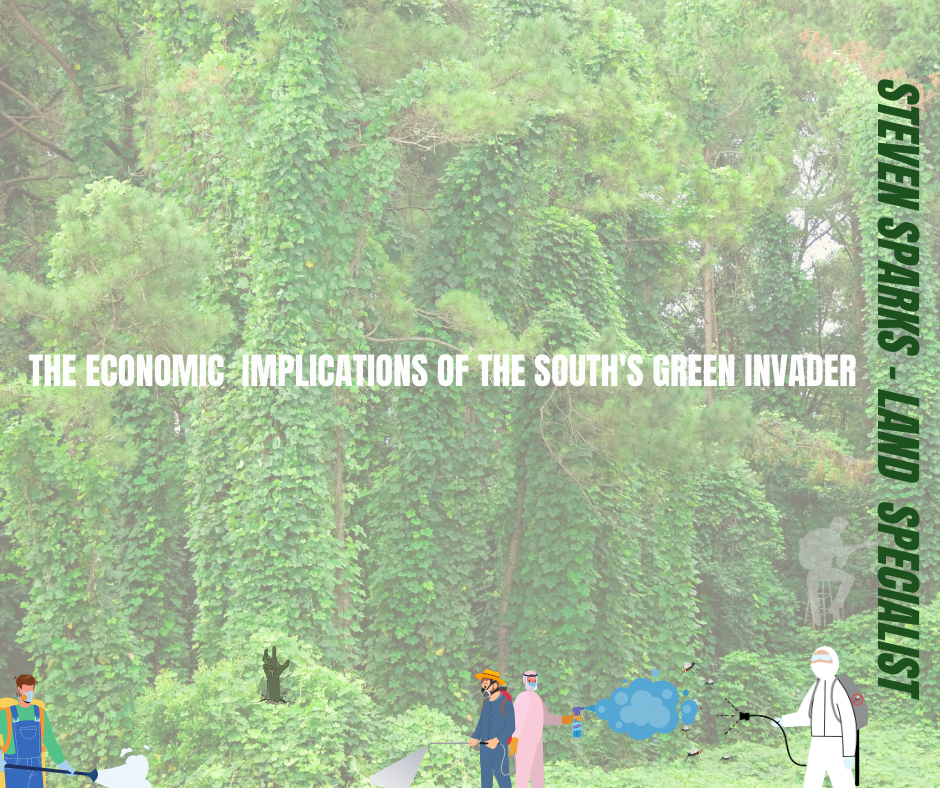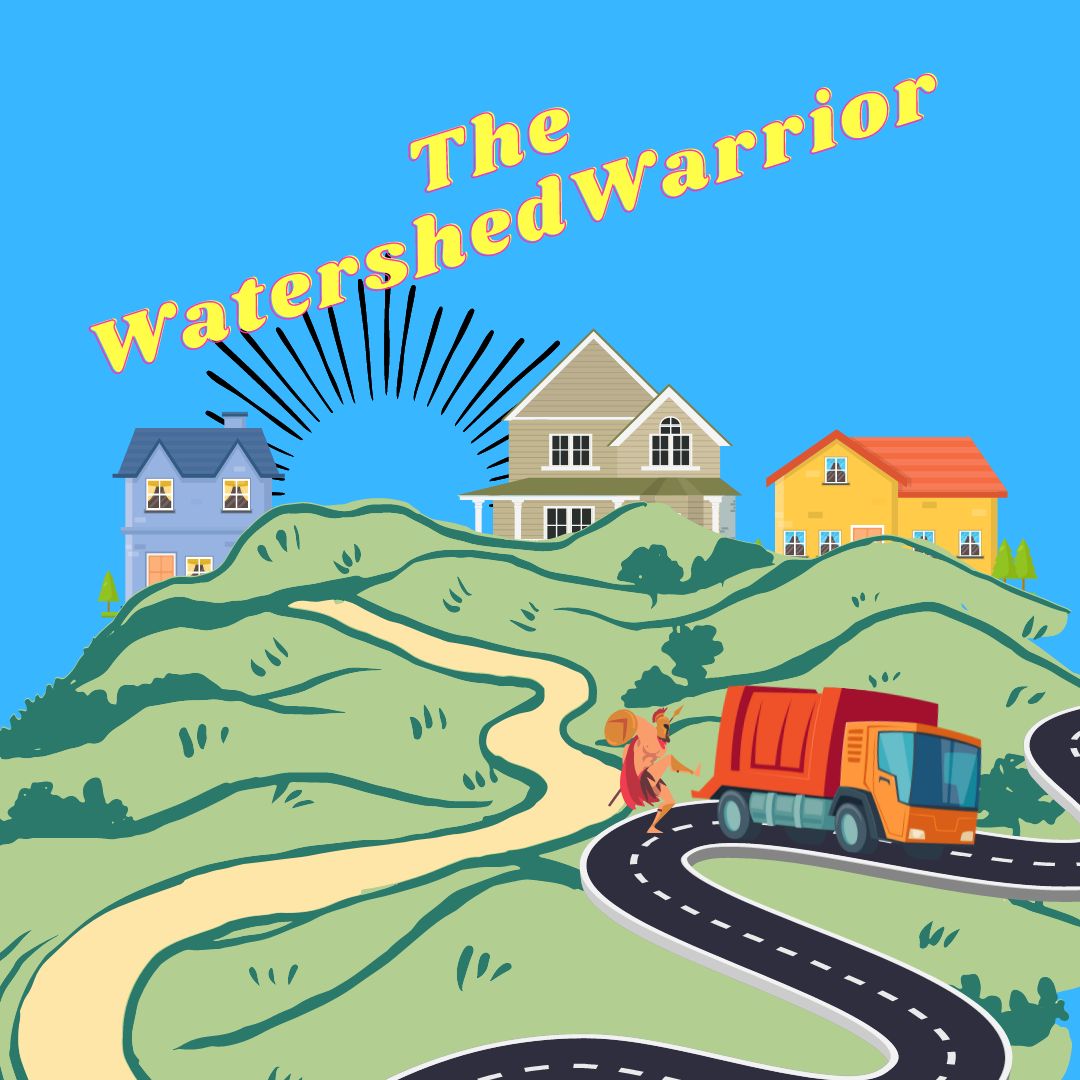Sow Kudzu, Sow Prosperity | History and Impact of Kudzu Cultivation
The Champion of the Kudzu Cause: Channing Cope
Enter the story of Channing Cope. Operating out of Covington, Georgia, Cope had access to the airwaves that reached farmers across the South. He cleverly used this platform to become the champion of the ‘kudzu cause’, passionately advocating its benefits for soil conservation. Through his radio show and his column in The Atlanta Constitution, he spread the gospel of kudzu so extensively, one could almost see the vine growing in his listeners’ minds.
The Journey of Kudzu: From Panacea to Nemesis
The journey of kudzu began in 1876 when it was imported from Japan for the Philadelphia Centennial Exposition. Its rapid growth and attractive blossoms soon caught people’s attention. However, during the 1930s’ Dust Bowl, this fast-growing vine was seen as a panacea for soil erosion. The U.S. Soil Erosion Service even endorsed the widespread planting of kudzu. Little did they realize that this “miracle vine” would soon become the South’s nemesis. Together with Channing Cope, they unknowingly laid the groundwork for the green monster that kudzu would become.
The Kudzu Club of America and the Growth of a Green Monster
In the 1940s, Cope even kicked off the “Kudzu Club of America,” amassing over 20,000 members. The club’s motto was as simple: “Sow kudzu, sow prosperity.” It was the perfect jingle for the times, dovetailing with the U.S. government’s promotion of kudzu. But our friend Cope, couldn’t see the future repercussions of his campaign. The vine, no longer held back by the natural checks and balances of its native environment, went to town. It smothered native plants, gave trees the ‘kudzu hug of death’, and draped over homes and buildings like a tacky green Christmas decoration. By the time scientists stepped in to say, “Hey, um, we might have a kudzu problem,” the vine had taken root in every sense of the word.
The Lessons from Kudzu: Consider the Consequences
This should remind us of the importance of pausing to consider the possible fallout before introducing a new species into an environment. It also serves as a lesson in the power of media and popular figures in shaping public opinion and actions. Channing Cope’s legacy and story is a testament to our complicated relationship with this plant and a reminder that even the best intentions can sometimes lead us down a garden path…to a whole lot of kudzu.
Kudzu: An Emblem of Southern Grit and Adaptability
Folks born and raised in the south have become intimately familiar with the relentless expansion of this vine. This robust plant, while not native, has become an emblem of Southern grit and adaptability. It’s etched itself into our narrative and is part of our story. Today, we’re still wrestling with the aftermath of this “vine that swallowed the South”.
Applying Herbicides: Techniques and Timing
One method to control kudzu is through chemical intervention. Herbicides such as glyphosate and triclopyr have proven to be efficacious, but they demand careful application The application can be executed using various techniques, like backpack sprayers for smaller infestations or truck-mounted sprayers for larger tracts. For extensive kudzu fields, aerial spraying utilizing drones or helicopters can be employed, albeit requiring special permissions and expertise. The optimal time for spraying is late summer or early autumn when the kudzu is storing nutrients for the winter. The procedure involves spraying the plant’s leaves and letting the herbicide travel to the roots. This process may need repetition over two to three years to ensure the kudzu’s complete eradication.
Prescribed Burning: An Effective Tandem Method
Prescribed burning is another method that, combined with herbicide application, can yield high effectiveness. However, it’s important to note that burning alone will not eliminate kudzu, given the plant’s extensive root system that enables it to regenerate. Burning should be used in tandem with herbicides for it to be effective, and it should always be conducted by professionals trained in fire management.
Herbicides and Burning: A Strategic Combination
When employing a combination of herbicides and prescribed burning, you first apply the herbicide, wait for the kudzu to wither (which may take several weeks to a couple of months), and then initiate the burn. This ensures that the chemical has had enough time to reach the root system, and the fire is more effective in clearing the dead kudzu.
Kudzu’s Winning Strategy and Growth Mechanism: Sunlight, Photosynthesis, and Runners
Kudzu doesn’t strangle its plant rivals. No, it’s more subtle. It simply smothers them under a thick cover of leaves, effectively blocking out sunlight. Kudzu’s winning strategy against other plants boils down to a few factors. Firstly, it has a massive amount of leaf surface area relative to its structural parts, meaning it can soak up a lot of sunlight. Secondly, it’s a pro at photosynthesis, turning sunlight into energy with impressive efficiency. Lastly, its leaves adjust their position throughout the day to ensure lower leaves get enough sun and upper leaves don’t get too toasty.
Spreading kudzu seeds isn’t its style. Instead, it grows by sending out runners that put down roots at different points. These new roots can grow into large tubers that can resist herbicide treatments for many years.
The Financial Impact of Kudzu: A Nightmare for Industry
Financially, kudzu is a nightmare. It reduces the worth and quantity of timber. Currently, kudzu blankets over seven million acres across the U.S. and is expanding at a rate of about 120,000 acres annually. U.S. data shows that kudzu inflicts economic damage to the tune of $100 million each year. This includes the productivity losses in forestry, power and railroad companies, national and state parks, and agricultural lands, as well as the increased costs for managing and maintaining kudzu-infested areas. Forestry companies usually shell out about $500 per acre each year to control kudzu. Power companies fork over around $1.5 million per year to manage kudzu issues and offset power loss.
Cost of Kudzu Extermination: A Pricey Battle
Now, onto the cost of kudzu extermination. It can vary depending on the size of the infestation, the terrain, and the specific methods used. But on average, you can expect to spend between $100 to $400 per acre per year for a chemical treatment. This sum includes the cost of the herbicides and the labor to apply them. Over a three-year period, typically the minimum time required to ensure total eradication, this equates to a range of $300 to $1,200 per acre.
The Cost of Prescribed Burns: An Additional Expense
The cost of prescribed burns can also fluctuate based on local regulations, labor costs, and the need for repeat burns. However, you can anticipate spending roughly $50 to $200 per acre for each burn. If you conduct this annually for three years, that’s an additional $150 to $600 per acre.
The Kudzu Story: A Cautionary Tale
And so, that’s the story of how kudzu went from being the next big thing in soil conservation to the uninvited guest that won’t leave the party even after it’s over. It’s a classic tale of “be careful what you wish for.” We wanted a quick fix for soil erosion, and boy, did we get it.
Links and Resources: Learning More about Kudzu
- The Kudzu Plant: Profile of an Invasive Vine – National Park Service’s detailed article on Kudzu, its characteristics, and its impact on the environment. http://www.nps.gov/articles/kudzu.htm
- Invasive Species: Kudzu – Information about Kudzu from the U.S. government’s National Invasive Species Information Center. http://www.invasivespeciesinfo.gov/profile/kudzu
- The Economic Impact of Kudzu – An academic study on the economic consequences of Kudzu infestation, available through JSTOR. http://www.jstor.org/stable/10.2307/12345678
- Methods for Controlling Kudzu – USDA Forest Service’s guide on various methods for controlling and eradicating Kudzu. http://www.fs.fed.us/research/invasive-species/plants/kudzu.php
- Kudzu in Georgia: History, Uses, and Control – A comprehensive resource from the University of Georgia Extension detailing the history of Kudzu in Georgia and methods for its control.
Sow Kudzu, Sow Prosperity | History and Impact of Kudzu Cultivation Read More »




 So, there was a man named Sue (formerly a boy) who had been dreaming of owning his own land for many years. One day, he found the perfect piece of land for sale at a price of $220,000. He put in an offer of $200,000 and it was accepted. This land tract was 80 acres and had 50 tons of mixed hardwood sawtimber per acre.
So, there was a man named Sue (formerly a boy) who had been dreaming of owning his own land for many years. One day, he found the perfect piece of land for sale at a price of $220,000. He put in an offer of $200,000 and it was accepted. This land tract was 80 acres and had 50 tons of mixed hardwood sawtimber per acre.